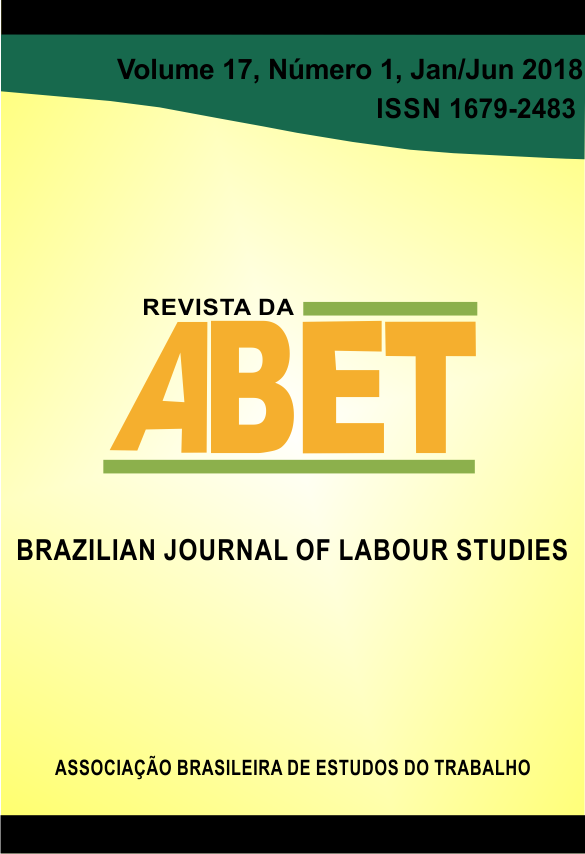NURSING IN BRAZIL: INTERSECTION OF GENDER, RACE AND SOCIAL CLASSES RELATIONS IN THE PROFESSIONAL FIELD
DOI:
https://doi.org/10.22478/ufpb.1676-4439.2018v17n1.41162Abstract
The objective of our article was to know the organization of the three main nursing professions: professional level nurses, nursing technicians and nursing auxiliaries. We investigate the historical configuration of these occupations, from Brazil colony to the present day and, taking into account the relations of gender, race/color and social class, we show how the internal technical division of labor was hierarchized from and on such relations. The choice for nursing occurred because this is a traditionally feminine area of work and we talk a little about the cultural motivations of this throughout the text. From documentary research, literature review and online searches, we selected the pieces that substantiated our analyzes. In addition, we present some statistics from 2015 of RAIS – Relação Anual de Informações Sociais do Ministério do Trabalho – that base in statistical terms our hypothesis of segmentation.
Downloads
Metrics
Downloads
Published
How to Cite
Issue
Section
License
Política de Acesso Livre
Esta revista oferece acesso livre imediato ao seu conteúdo, seguindo o princípio de que disponibilizar gratuitamente o conhecimento científico ao público proporciona maior democratização mundial do conhecimento.
Atribuição dos artigos é não comercial (sem derivações 4.0, isto é, Creative Commons) e o acesso é livre e gratuito para download e leitura.
Não há taxa para submissão, avaliação e publicação de artigos.
Copyright
1) Os artigos são de responsabilidade exclusiva dos autores. É permitida sua reprodução, total ou parcial desde que seja citada a fonte.
2) Os trabalhos enviados para publicação devem ser inéditos, não sendo permitida sua apresentação simultânea em outro periódico nacional.
3) Os artigos são submetidos a pareceristas "ad hoc", após prévia avaliação da Comissão Editorial, os quais podem aceitar, recusar ou reapresentar o original ao autor com sugestões para alterações. Os nomes dos pareceristas permanecem em sigilo, bem como os nomes dos autores.
Os Autores que publicam nesta revista concordam com os seguintes termos:
Autores mantêm os direitos autorais e concedem à revista o direito de primeira publicação, com o trabalho simultaneamente licenciado sob a Creative Commons Attribution License, permitindo o compartilhamento do trabalho com reconhecimento da autoria do trabalho e publicação inicial nesta revista.
Autores têm autorização para assumir contratos adicionais separadamente, para distribuição não-exclusiva da versão do trabalho publicada nesta revista (ex.: publicar em repositório institucional ou como capítulo de livro), com reconhecimento de autoria e publicação inicial nesta revista.
Autores têm permissão e são estimulados a publicar e distribuir seu trabalho online (ex.: em repositórios institucionais ou na sua página pessoal), já que isso pode gerar alterações produtivas, bem como aumentar o impacto e a citação do trabalho publicado.
Patrocinador
A publicação recebe financiamento da Associação Brasileira de Estudos do Trabalho.










